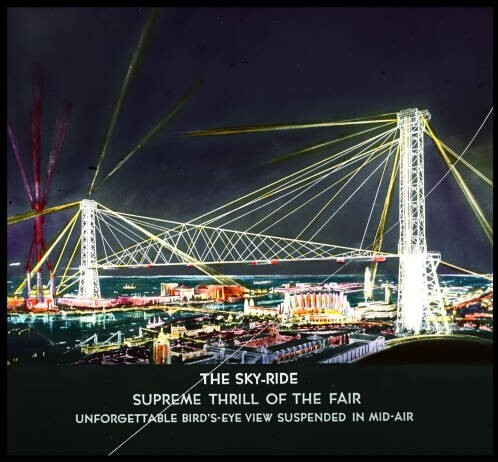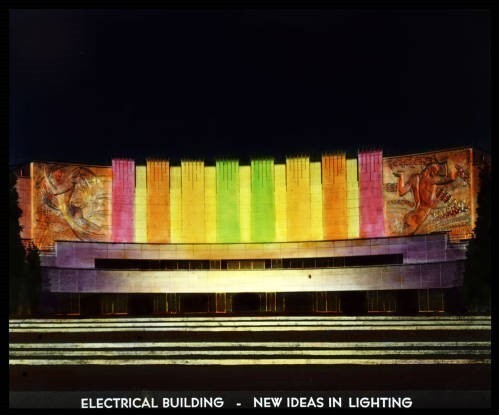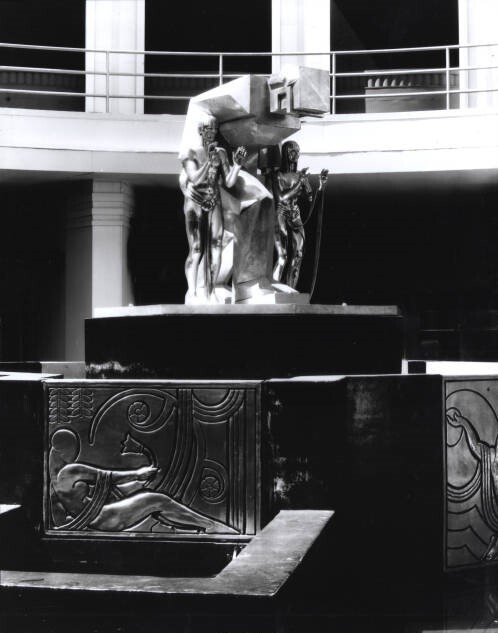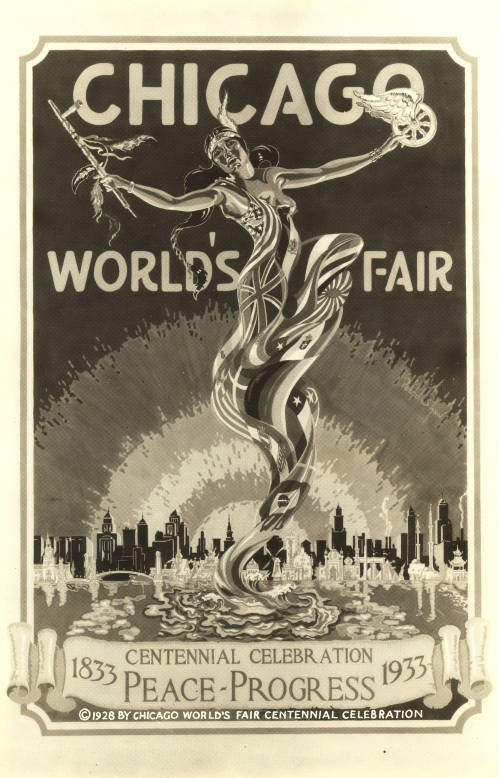A Century of Progress International Exposition: A Vision of Progress
The Century of Progress unofficial motto was “Science Finds, Industry Applies, Man Conforms.” These words would influence numerous aspects of the Fair, from the content of pavilion exhibits to the design of statuary on the fairgrounds. The opening night of the Fair on May 27, 1933, exemplified this spirit of tomorrow by launching the Century of Progress with a light show created in partnership with the energy companies General Electric and Westinghouse Electric. Scientists coordinated with and used equipment provided by the companies to harness the light from the star Arcturus and use it to light the Fair arena. Light that had left the star 40 years ago during the World’s Columbian Expo had traveled 186,000 miles a second through space to reach the 1933 opening, and electrical impulses from the star’s captured light were transmitted via revolutionary photoelectric cells and power lines to light up the Fair arena.
From the lights of this magnificent night-time display, fairgoers would have had their first glimpse at the vibrant fairgrounds. In seeking to surpass the example set by the World’s Columbian Exposition in 1893, the Century of Progress buildings were painted in a brilliant palette of 24 different colors. This “Rainbow City”, in contrast to the acclaimed neoclassical “White City” of the 1893 Fair, featured the Moderne style of architecture and design in addition to using novel construction approaches such as synthetic and prefabricated building materials. The Century of Progress was also the first World’s Fair to use neon, krypton, helium, and mercury vapor tubes as lighting; yet another example of science enriching the lives of the general public.
The organizers of the Century of Progress sought to infuse this sense of progress into the content of the Fair’s exhibits as well. In 1928, at the behest of various Chicago physicians and scientists, Rufus C. Dawes agreed to center the Fair’s focus on science and industrial progress. Fair organizers and prominent local figures saw the Century of Progress as an opportunity to cement alliances between the business and scientific communities, and to rebuild public trust in science after the devastation wreaked by chemical weapons in the First World War. To this end, Dawes asked the National Research Council for assistance and, in exchange for help in formulating a philosophy of science for the Fair, agreed to scientists' requests for a separate Hall of Science that would give the Fair its unofficial motto of “Science Finds, Industry Applies, Man Conforms.”




